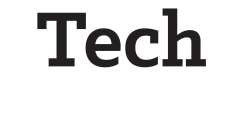Audio transcript:
Microsoft 365 for Small to Medium Businesses, Part 1
[Music]
Elliot
Hello, welcome to another episode of "Tech Talk". My name's Elliott Baretz. I'm the National Director of the Microsoft Commercial Business Unit here at Insight. And I'm joined by my friend and colleague...
Jesse
Jesse Anderson, responsible for offering development for our cloud solutions.
Elliot
Excellent. I'm really excited to have this conversation, Jesse. I know that you and I benefit from bantering every day when it comes to the world of Microsoft and technology in general. And I know that we often find ourselves focused on 365, Microsoft 365, and that cloud suite that is so powerful for so many companies. Today's conversation is about that technology and how does it serve the SMB segment. The small mid-market organization, where having that kind of power can be so critical for them. And I know that you and I were chatting about where do we start that conversation and I think it really is in the very early stages of, hey, look, if I'm somebody that's interested in 365 probably important for me to know all that's in it. What does it mean? Because it's a term that can be pretty sweeping. So maybe we should start there and just sort of like, Microsoft 365, 101, what are the basics? So if you were to describe the core components of 365, where would you start?
Jesse
Yeah, I would start with where people are most familiar. So, Office 365 starts as the Office that most people are familiar with. It gives you your Exchange, Outlook, Word, PowerPoint the documents that we've been around, and you and I have grown up with.
Elliot
Right. I was going to use that expression.
Jesse
But it layers in sort of a cloud component that first of all includes all of those things and allows you to seamlessly move between devices. And it gives you the sort of online identity that I can move from my laptop to my phone, with all of those. But it also layers in Teams, right. A relatively newer product but most people know it now, collaboration, video collaboration and SharePoint, which allows an organization to drive internal content to their internal users. In-tune that provides this layer security. A lot of cloud-based elements that take the Office that we know and allow us to do more with it.
Elliot
Yep, and I would throw out One Drive, right? So, in our ability there to take documents, take assets, put them into the cloud and give that layer of protection in terms of... What has happened to all of us is we take a file, we put it in our desktop and then something happens to our desktop and then we can find that file. And in this case, if it's in One Drive, if it's in the cloud, it's always successful. Whether I've lost my laptop or whether I'm just someplace else, I can get to what I need get to and that adds a lot of flexibility and power to what's going on.
Jesse
Yeah, and I'll just tell you one of my favorite things about that is that if I'm working and then at night, I open a document on my phone to work on and it's saved right there when I open up my laptop. All my changes are right there. It really is kind of phenomenal.
Elliot
Yeah, yeah. The phone actually drags me to thinking about a couple of things. You brought up Teams before and the ability for Teams to help us collaborate through video in a very powerful way. And I think we're going to talk about Teams a little bit later in the conversation but with that Teams... Teams gives us the ability to have not just video but audio conference calls in a very robust scheduled way or impromptu way. It helps us reach across to an organization that's going to be very distributed because what we all know over the last year is that today's business, whether you were Fortune 500 or the smallest of businesses, you had to support a remote work environment. You had to learn how to work and collaborate from your, from anywhere, with other people that were someplace else. And Teams found a home in that sweet spot and that really became the bridge for most companies in terms of how they survive that. And as a 365 user, you could be on Teams, whether you were on a desktop or on a phone or wherever you wanted to be, you could insert yourself into that conversation, into that meeting, into that video conference, you were there.
Jesse
Yeah, and even to that point, like you could be invited into a meeting midstream. I think that's one of the other things, right? Like absolutely, it allowed us to keep on going and be just as productive. I think that's one of the big sorts of proof points, when you think about this is that many of us found ourselves being at least as productive as we had been going into the office because these tools that maybe we just started using or we hadn't used their full capabilities, we started using and drove productivity through the roof and it's been an amazing thing. Yeah, I agree.
Elliot
Yeah, absolutely. Yeah, I mean, one of the things that you were just mentioning that I thought about was presence. The idea of knowing when somebody was available or not available, just based on, I could look at Teams, or any portion really of my 365 experience, which is something many people know. So, within 365, are all these integration points between Word, Teams, you mentioned SharePoint and anybody that I'm collaborating with, I can see very quickly if they're online and if they're available based on just the simplest of color codes. If they're green, they're available, if it's red, they're busy. Everything else that's out there for us to really know how I can pull a person into either a video call or if I want to collaborate on a document, if I'm collaborating on a document online and we're going through different versions. These are all things that we can manage in this sort of cloud-based environment, which is pretty cool after all this time.
Jesse
It's very cool. No, I agree, and I think that one of the things about, as you talked through all of those things, these are things that... I think that it's important to note that for a small and medium business, these provide massive amounts of value and again, productivity, when you think about everything a business of any size, small, medium, large needs to effectively manage their business, you mentioned version control. We mentioned the ability to meet and know when people are working. All of these things allow us to work in any way that we need to, but also cover all of those key needs. From security to managing our documents to being able to share information only with the relevant parties within our organization. It's a super powerful kind of collection of things. And I think it provides, we've seen unique value brought to small and medium businesses over the past year for sure.
Elliot
Yes, I think a couple thoughts there. One is, if you're a small business, if you're a medium sized business and you reflect on the last year, what we observed, just as humans going through it, was there were some small businesses, any business that didn't survive because it was locked into a particular architecture. It was locked into a particular way of doing business. And those that survived had the flexibility, found the way to be flexible, found a way to adapt to the environment and tools like 365 helped that happen, helped them support, in a very quick way, a remote work environment. It helped them support collaboration in a distributed way. That latitude helped them survive. And then you think about security and the security that something like a Microsoft solution provides versus other scenarios and other solutions that may have come to light during the early parts of the pandemic, that didn't have that security, Microsoft brought that to it. And it makes me think about, back in the day (chuckles) when we were just starting to grow up. (both laughing) What I remember was there was this huge gap between the technology that was available to a small business versus the technology that was enjoyed by the mid-size, even larger organizations and it was a huge gap. A small organization couldn't afford very powerful technology because of the money, the capital it would take to get them in a position and a big company could afford it so they would have it. But that is completely gone away. That is dissipated entirely. Today as a small business, you can make available to you the exact technologies that a Fortune 500 company is using, at a price point that you can manage in a subscription basis.
Jesse
Yeah, a hundred percent right. Like I think that's spot on. And I think it is true. I remember those little days as well. And it wasn't very long ago, the reality now is that when we are talking to a customer, and if anyone out there is looking for this product, it's not about the size of your organization anymore. It's about the needs of your organization and how you solve it. And I think that that is the really exciting thing about the way technology has changed the conversation, is that there aren't these barriers to entry that there used to be. It's to your point, the same functionalities available to organizations of any size, without any real barrier to entry. And that's a massive change, a massive change in the way the technology industry has met the needs of businesses.
Elliot
Yes, and all of it is really facilitated by this cloud. This notion of cloud architecture, where if I'm a small business and I want to enable my employees through technology, I don't have to buy servers. I don't have to build a network. I'm going to subscribe to an online service that is persistent in the cloud or exists in the Microsoft cloud. And what that gives me is the ability not to spend money on that data center or the servers, if you will, that may have been needed before. And it helps me manage my capital. So for those that don't know, in order to get 365, you pay on a per seat per month basis. It's a subscription model, which makes a ton of sense because what we know today in terms of online, the online experiences, it's a subscription model. You pay for what you need. And that gets you into a position where if you're a small business, you can spend anywhere between $8 and $20 per seat per month to give yourself the technology to compete at any level. You're not paying massive dollars upfront for anything and you manage the cash, and you manage the capital based on what you need. If you hire 10 more people, you're still paying for those 10 people on a month by month basis. If you reduce your staff, you can shed that cost. Gives you much better controls in terms of the business itself.
Jesse
I agree. I think the other thing that's really interesting about it is that... And again, what the cloud enables is to make sure that an organization is maximizing that return on investment as well, by making sure that I can seamlessly and easily share policies across my devices. That I can, as you mentioned, make sure that I've got the security that I need. An organization can interact in the ways I needed to, again, intranet sites, the way I set up meetings with customers. All of these things. So well, that financial flexibility absolutely comes from a subscription model. The return on investment is also much greater at this rate.
Elliot
Yeah, a hundred percent, I agree. So, what's interesting I know that we're planning on having a couple of conversations on this topic in terms of 365 and small businesses and so forth. And I know that in the next episode of "Tech Talk", you and I are going to spend some time talking about a couple of things. One is, hey, with this subscription-based model, you can work with a partner like Insight to not only get the technology but also get support services that are part of that experience. So today, you can work with Insight, and we can provide you with a subscription to 365, but with it can come your end user support, meaning for your employees, if they've got questions or needs around 365, they can call Insight. We'll take care of it for them. We can provide consulting services. So that with that subscription they can gain access to our experts so that they can understand a better way to take advantage of all the other technologies that may be a part of the 365 experience or the security layer, something that you were talking about before and then some, right. So, this is a bit of a tease for our next conversation because that's such a critical part of all of this.
Jesse
Yeah, and I'm excited for that conversation as well. I think it's one of the things that has been most exciting is that by being able to... That conversation we'll talk more about it but by being able to take all the value we've talked about and then be able to try more innovation within small and medium businesses, what we've seen over the last year just makes me really excited about where we're going and what we have to offer to our customers. So yeah, I look forward to it.
Elliot
Sounds good. All right, well, thanks Jesse, for joining me in the conversation. Thank all of you for joining us today and we look forward to you joining us for our next follow-up chat. Thank you.
Jesse
Thank you.
[Music]






